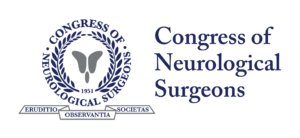 The Congress of Neurological Surgeons (CNS) recently awarded their Top Paper of the Year and Spine Section Paper of the Year to an analysis of 10-year results from a prospective, randomised, clinical trial comparing cervical disc arthroplasty (CDA) to anterior cervical fusion, conducted by George Ghobrial, William Lavelle, Jeffrey Florman, K Daniel Riew and Allan Levi. The CNS 2019 Annual Paper of the Year awards honoured research published in Neurosurgery from July 2018 to May 2019 that, according to a press release, “challenged dogma, created a paradigm shift, and/or encouraged surgeons to rethink approaches to patient care, big data, and trial results.”
The Congress of Neurological Surgeons (CNS) recently awarded their Top Paper of the Year and Spine Section Paper of the Year to an analysis of 10-year results from a prospective, randomised, clinical trial comparing cervical disc arthroplasty (CDA) to anterior cervical fusion, conducted by George Ghobrial, William Lavelle, Jeffrey Florman, K Daniel Riew and Allan Levi. The CNS 2019 Annual Paper of the Year awards honoured research published in Neurosurgery from July 2018 to May 2019 that, according to a press release, “challenged dogma, created a paradigm shift, and/or encouraged surgeons to rethink approaches to patient care, big data, and trial results.”
The winning paper, first published in February 2019, found that compared with anterior cervical discectomy and fusion (ACDF), fewer patients with the Bryan disc (Medtronic) required surgery for symptomatic adjacent level degeneration, but that this did not achieve statistical significance. However, analysis of combined study data using the Bryan and Prestige (Medtronic) discs showed “significant differences” in symptomatic adjacent level disease requiring surgery (SALDRS) as early as seven years.
Ghobrial and colleagues reveal that “significantly greater” overall success was maintained at every postoperative interval, with an overall success rate of 81.3% with the Bryan disc and 66.3% with ACDF (p=0.005) without loss of motion preservation (8.69 degrees vs. 0.6 degrees). They note that reoperation at adjacent levels up to the 120-month visit was 9.7% in the arthroplasty group and 15.8% in the ACDF group (p=0.146).
Finally, the Bryan and Prestige disc groups, based on combined data, had a lower rate of second surgeries at the adjacent levels, up to the 84-month visit, compared to the pooled ACDF groups (6.9% vs. 11.7%; p=0.023).
The investigators analysed prospective randomised trial data comparing Bryan cervical disc arthroplasty to ACDF for single-level cervical disc disease with concordant radiculopathy or myelopathy with clinicoradiographic analysis at 10 years. Secondarily, 84-month data were pooled with Prestige cervical disc arthroplasty study data to provide overall rates of SALDRS.
Previously, ten-year follow-up data from the US Food and Drug Administration (FDA) investigational device exemption (IDE) trial comparing Bryan cervical disc arthroplasty to ACDF had demonstrated that disc arthroplasty maintained range of motion and improvements in overall success and neck disability. The objective of this study was to compare the 10-year rates of SALDRS.
According to Ghobrial and colleagues, while ACDF has long been regarded as a “relatively safe, versatile, and effective” treatment for cervical spondylotic disease and other cervical pathologies with high rates of success and an acceptable periprocedural complication rate, one “overarching concern” has been the development of symptomatic adjacent level degeneration (SALD) after ACDF, thought to be the product of increased segmental motion, intradiscal pressures, articular surface loading, and strain.
They note that this “undesired outcome” was first described retrospectively in 374 patients by Hilibrand et al, who cited a 25.6% 10-year rate of SALD, or 2.9% a year.
The Bryan cervical disc prosthesis was introduced clinically in 2002, followed shortly from favourable trial results from other cervical disc arthroplasty (CDA) devices, and increased attention has since focused on determining the difference in SALD between ACDF and CDA, with the hypothesis that CDA may restore favourable kinematics of the cervical spine, and therefore, will lower rates of SALD.
The Top Paper award will be presented to senior author Allan D Levi (University of Miami Miller School of Medicine) at the CNS’ largest platform, the Annual Meeting, to be held this year in San Francisco, USA, 19–23 October.
“Neurosurgery Publications is delighted to continue the Neurosurgery Paper of the Year CNS awards at the 2019 CNS Annual Meeting,” said editor-in-chief Nelson M Oyesiku. “We are incredibly lucky to have the brightest minds in neurosurgery submit their papers to Neurosurgery. It was difficult to narrow the field to the awardees; however, we are confident the selected papers each constitute a significant contribution in our field.”












